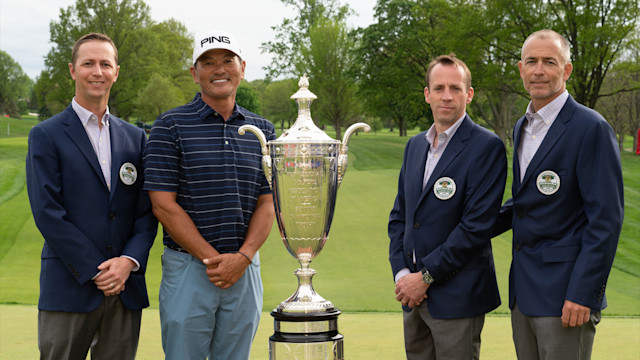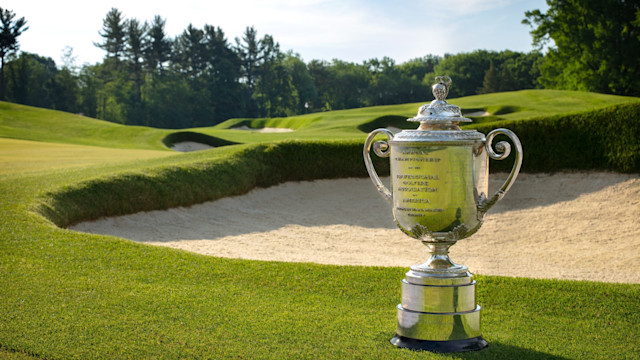Category - Major Events
Oak Hill, a Donald Ross Masterpiece, Reinstated
By Jason Lusk
Published on

No. 3 at Oak Hill Country Club
Nothing remains static on a golf course for long. Grass grows, often in new places and in unexpected ways. Bunkers shift as sand is blasted out by players. Trees grow, blocking light, air and playing lines. Undulations shift on greens, which themselves often shrink over years and decades. Whether through intentional architectural efforts or natural evolution, every golf course changes in time.
Even those that host major championships. Consider Oak Hill Country Club’s East Course in Rochester, New York, site of the 2023 PGA Championship.
Opened in 1926 with a design by architectural legend Donald Ross, the East had undergone many changes over the decades, many of them in pursuit of additional challenge to the best players in the world. Among its many championships, the East has hosted three PGA Championships (1980, ’03 and ’13) and three U.S. Opens (1956, ’68 and ’89), with winners including the likes of Jack Nicklaus, Lee Trevino and Curtis Strange. Add to those events a rich history of amateur and senior events, plus the 1995 Ryder Cup, and Oak Hill’s rich championship history clearly ranks among the best clubs in the world.
But the course had changed dramatically over the years, losing much of its Ross flavor. Robert Trent Jones tweaked the East in the 1950s and ‘60s, including the replacement of a par 4 considered by many to be among the best in the country in the name of spectator flow. In the 1970s, George and Tom Fazio further modernized the layout, redesigning three holes—the fifth, sixth and 15th—and moving the 18th green. While these changes were all implemented in the interest of increased difficulty for touring professionals, the club received criticism about eliminating too much of Ross’s original design.
Add in naturally occurring changes to the course over the years, and club officials knew it was time to make some changes.
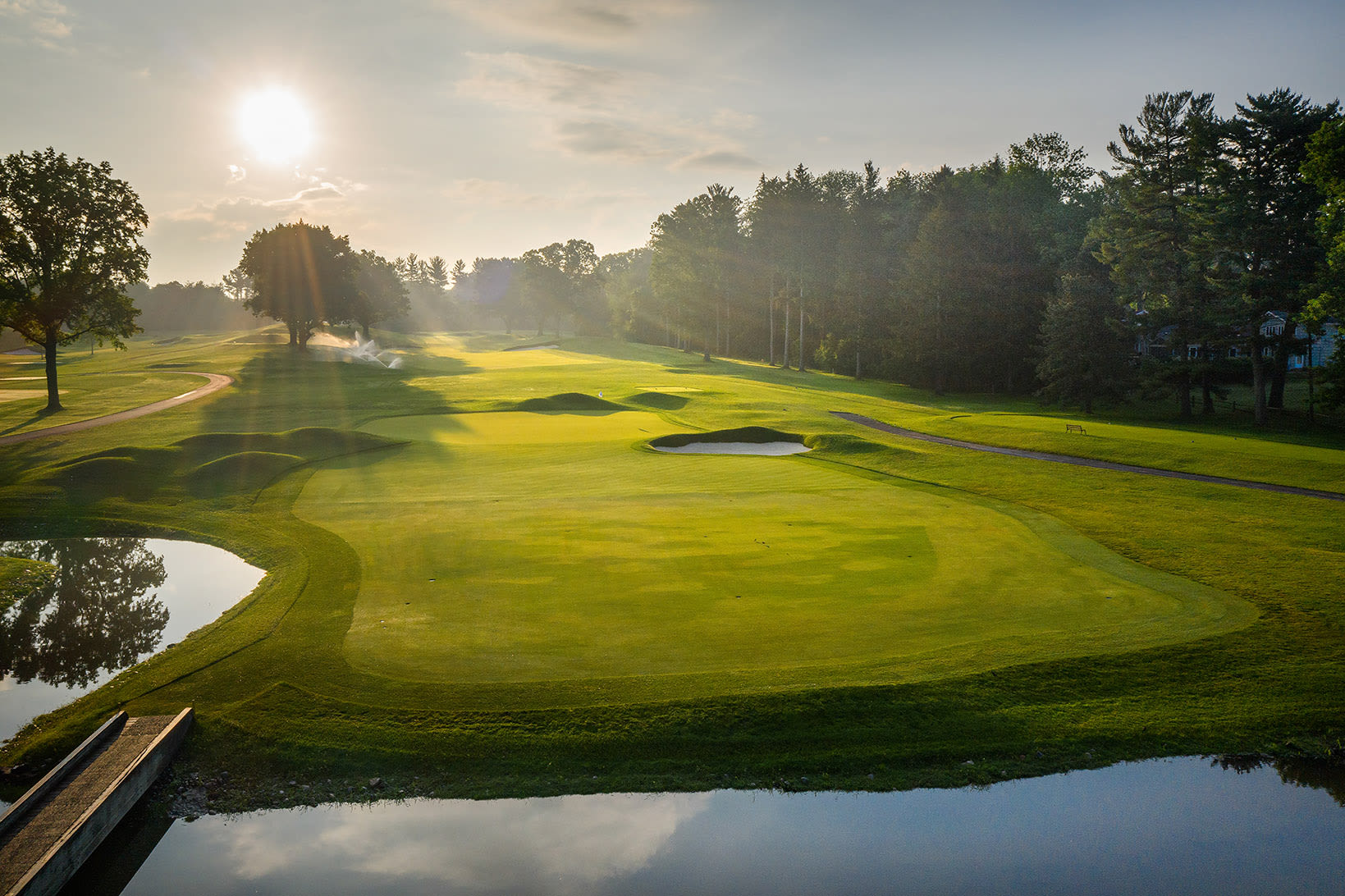
No. 1 at Oak Hill Country Club.
“It’s just like owning a home in some regard. You always have to do some housekeeping, always have to do some updating,” said Jeff Corcoran, Oak Hill’s manager of golf courses and grounds. “And I think the progression of the game dictates a lot of the work you need to do, in some regards, if you want to be a golf course that hosts major championships.”
Starting in 2015, the club decided to put the Ross flair back into the course. It hired architect Andrew Green, who the club said worked with Corcoran; Jeff Sluman, PGA Tour professional and Rochester native; and an East Course Restoration Committee led by Tim Thaney and Jim McKenna. The club said its objectives were to add length where possible, create more forward tees for members, expand areas where cups could be cut into greens and to evaluate options for holes that had been changed over the years. Green used Ross’s original drawings and historical photos to determine the best course of action in restoring the layout.
“Donald Ross set the East Course at Oak Hill Country Club on a stunning piece of ground where the holes turn direction and flow over the property in an inspired fashion,” Green—who has established himself as a restoration expert with such work completed at Wannamoisett, Inverness, Congressional and several other such classic layouts—told the club at the outset of the restoration.
We will utilize every ounce of historic data to reflect the strategy, style and intent of Ross with a keen eye on the way the game of golf is played today. The results will protect the legacy of Oak Hill for decades to come.
Andrew Green
Work wrapped up in 2019, with each of the 18 greens having been rebuilt to U.S. Golf Association specifications with enhanced drainage to provide firm playing conditions. All the bunkers were rebuilt with improved drainage and some were relocated, and they are now more classically Ross in appearance. An overabundance of trees of was removed to improve playing conditions, open vistas and reestablish playing lines. More than 175,000 square feet of new bent grass was installed on the putting surfaces and approaches, the club said, and Green led the restoration of green sizes and sometimes the alteration of existing contours to reestablish classic hole locations that had been lost in time.
“The big thing people are going to see is a tremendous amount of variety in the daily setup, because there are going to be hole locations that members haven’t seen for maybe 40, 50 years,” Green said in a club video commemorating the restoration. “It’s going to add to the aura and how great a major championship venue that it is.”
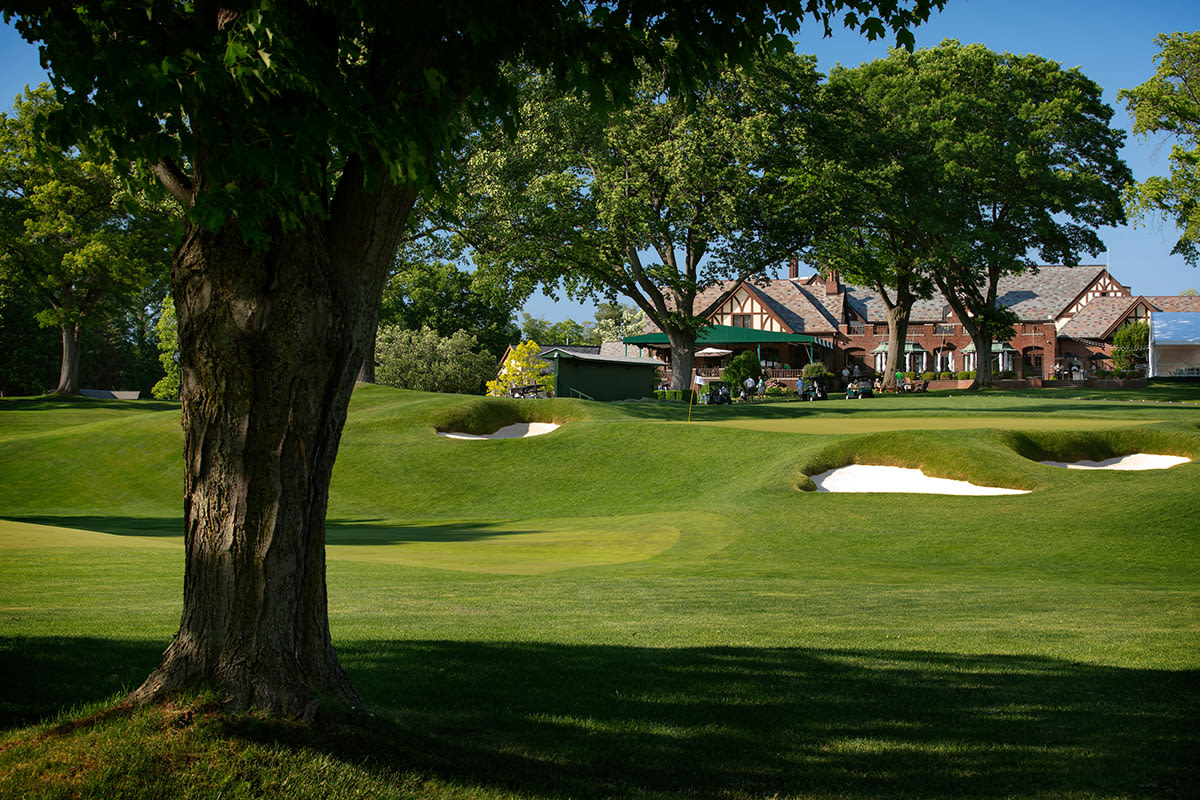
No. 18 at Oak Hill Country Club.
Most important, the three holes that been altered by previous designers were rebuilt to better match the intent of Ross, even if it was impossible to rebuild them exactly.
“Nos. 5, 6, 15 and to a lesser extent 18 had been the three or four holes that have been the most vilified here at Oak Hill,” Corcoran said. “They are the holes that were redone prior to the ’80 PGA. As we were walking around, we were like, if we’re going to all this trouble on the East Course, shouldn’t we rectify this biggest perceived problem?
“It really came down to, if we were going to redo something, how would we redo it in keeping the original architectural intent that Donald Ross had envisioned of this property? Andrew is phenomenal at that.”
Green designed a new fifth hole, a par 3 named Little Poison, in the same spot that held a par-3 fifth for the 1968 U.S. Open. The new green is slightly elevated and surrounded by Ross-inspired bunkers, with a wide range of flagstick locations and assorted challenges for any player who misses the putting surface on approach.
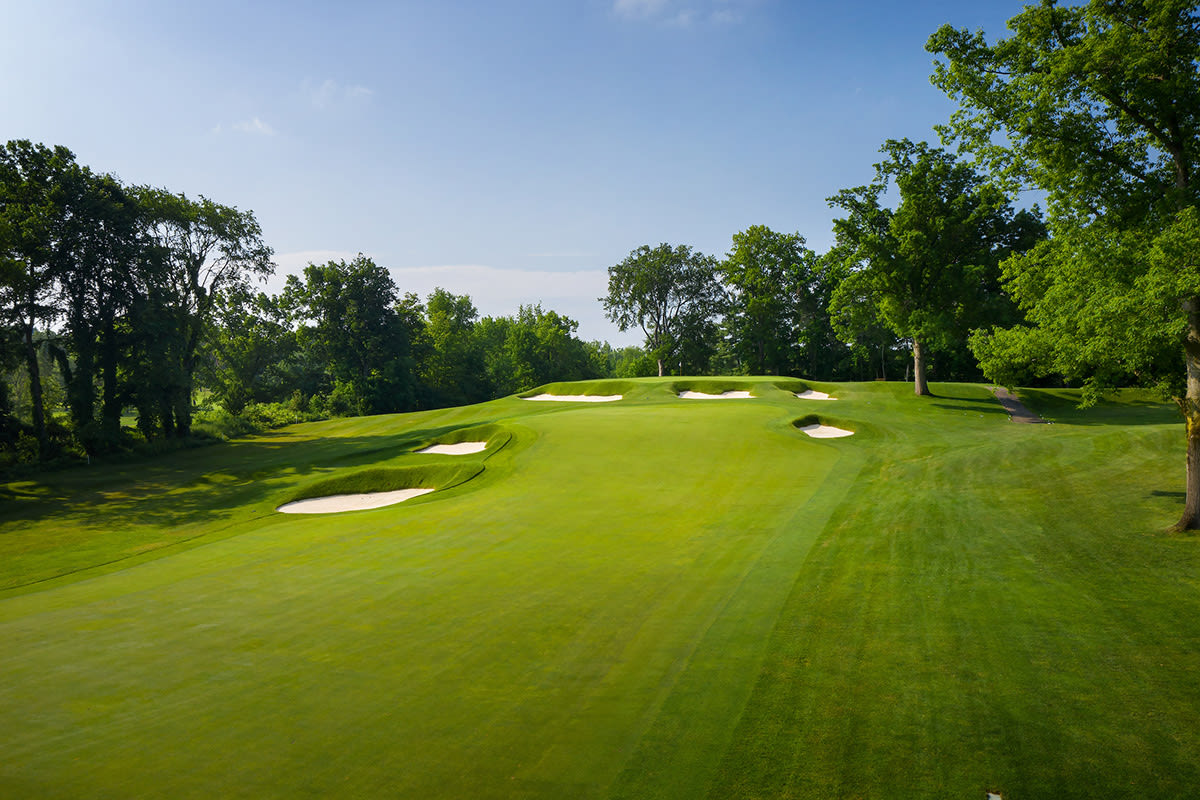
No. 14 at Oak Hill Country Club.
The club said the new par-4 sixth “sympathetically represents” Ross’s original par 4. Named Double Trouble, the hole crosses Allen’s Creek – a prominent feature throughout any round on the East – and can be stretched beyond 500 yards in a championship.
The new par-3 15th hole, named Plateau, removes a pond introduced during the Fazios’ renovation in the 1970s and reintroduces a large swale aside the “Postage Stamp” style of green that is long and narrow.
“They just feel like they flow,” Corcoran said of the new holes. “When you used to go to the old fifth and sixth holes, you would get to those holes and go, it just doesn’t flow, it doesn’t feel right. Anybody who had a little bent toward golf course architecture could definitely see it.
“Restoring that architectural intent, there’s just something very satisfying about that and knowing that future generations are going to get 18 contiguous holes to play out here. That’s a pretty special thing.”
